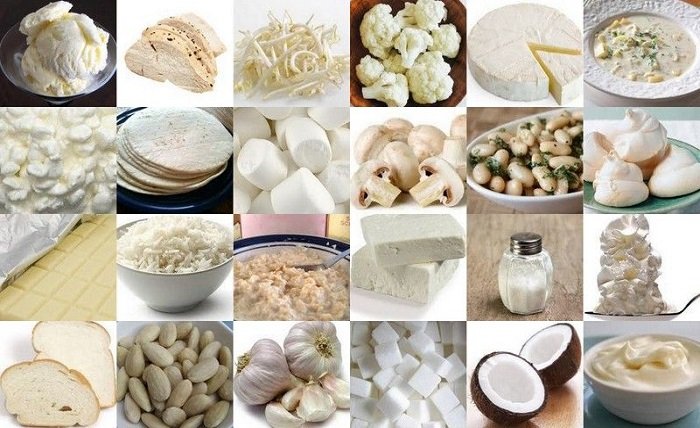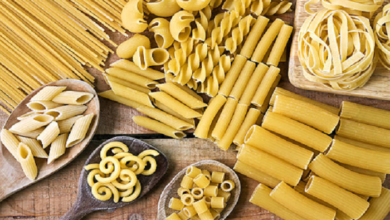White Foods: Are They Really Bad for You?

White foods are often considered unhealthy and blamed for causing weight gain, diabetes, and other chronic diseases. However, not all white foods are created equal. Some of them are actually nutritious and beneficial for your health. In this article, we will explore the pros and cons of some common white foods and how to include them in a balanced diet.
What are white foods?
White foods are foods that have a white or pale color, either naturally or due to processing. Some examples of white foods are:
- White bread, pasta, rice, and flour
- White sugar, salt, and corn syrup
- White potatoes, cauliflower, mushrooms, and onions
- White cheese, milk, yogurt, and butter
- White meat, such as chicken and turkey
- White fish, such as cod and halibut
Some of these white foods are highly processed and refined, meaning that they have been stripped of their natural fiber, vitamins, minerals, and antioxidants. These foods tend to be high in calories, carbohydrates, sodium, and fat, but low in nutrients and fiber. They can also cause spikes in blood sugar levels and inflammation in the body.
Other white foods are whole and natural, meaning that they retain their original nutritional value. These foods tend to be low in calories, but high in protein, calcium, potassium, vitamin C, and other beneficial compounds. They can also help lower blood pressure, cholesterol, and inflammation in the body.
Why are white foods often avoided?
White foods are often avoided because of the misconception that they are unhealthy and fattening. This is partly based on the glycemic index (GI), which is a measure of how quickly a food raises blood sugar levels after eating. Foods with a high GI can cause rapid spikes and drops in blood sugar levels, which can lead to hunger, cravings, overeating, weight gain, insulin resistance, and diabetes.
Many white foods have a high GI because they are made from refined grains or sugars that are quickly digested and absorbed into the bloodstream. For example, white bread has a GI of 75, while whole wheat bread has a GI of 51. Therefore, some people may choose to avoid or limit white foods to prevent these negative effects on their blood sugar levels and health.
However, the GI is not the only factor that affects blood sugar levels. Other factors include the amount and type of food eaten, the presence of other nutrients such as fiber, protein, and fat, the cooking method used, and the individual’s metabolism and health status. Therefore, not all white foods have the same impact on blood sugar levels and health.
For instance, white potatoes have a high GI of 82, but they also contain resistant starch, which is a type of fiber that resists digestion and acts as a prebiotic for the beneficial bacteria in the gut. Resistant starch can help lower blood sugar levels after meals, improve insulin sensitivity, reduce appetite, and promote weight loss. Moreover, white potatoes are rich in potassium, vitamin C, folate, and antioxidants, which can benefit your heart health, immune system, brain function, and skin health.
Similarly, white fish have a low GI of 38, but they also contain high-quality protein, omega-3 fatty acids, iodine, selenium, vitamin B12, and vitamin D, which can help lower blood pressure, cholesterol, inflammation, depression, cognitive decline, and cancer risk. Moreover, white fish are low in calories , fat , mercury , and environmental contaminants , which can make them a safe and healthy choice for your diet.
How to include white foods in a balanced diet?
White foods can be part of a balanced diet if you choose them wisely and eat them in moderation. Here are some tips on how to include white foods in your diet:
- Choose whole or minimally processed white foods over refined or highly processed ones. For example, choose whole wheat bread over white bread, brown rice over white rice, plain yogurt over flavored yogurt, and natural cheese over processed cheese.
- Choose white foods that have a low or moderate GI over those that have a high GI. For example, choose oatmeal over corn flakes, sweet potatoes over white potatoes, and quinoa over couscous.
- Combine white foods with other colorful foods that are rich in fiber, protein, and healthy fats. For example, add vegetables, beans, nuts, seeds, or avocado to your white bread, pasta, rice, or flour dishes.
- Limit your intake of white foods that are high in calories, carbohydrates, sodium, and fat, but low in nutrients and fiber. For example, limit your intake of white sugar, salt, corn syrup, and butter.
- Enjoy white foods in moderation and as part of a varied and balanced diet that includes foods from all the food groups: fruits, vegetables, grains, protein, and dairy.
Conclusion
White foods are foods that have a white or pale color, either naturally or due to processing. Some white foods are unhealthy and should be avoided or limited, as they are high in calories, carbohydrates, sodium, and fat, but low in nutrients and fiber. They can also cause spikes in blood sugar levels and inflammation in the body. Other white foods are healthy and can be included in a balanced diet, as they are low in calories, but high in protein, calcium, potassium, vitamin C, and other beneficial compounds. They can also help lower blood pressure, cholesterol, inflammation, and disease risk. The key is to choose whole or minimally processed white foods over refined or highly processed ones, and to eat them in moderation and combination with other colorful foods.




